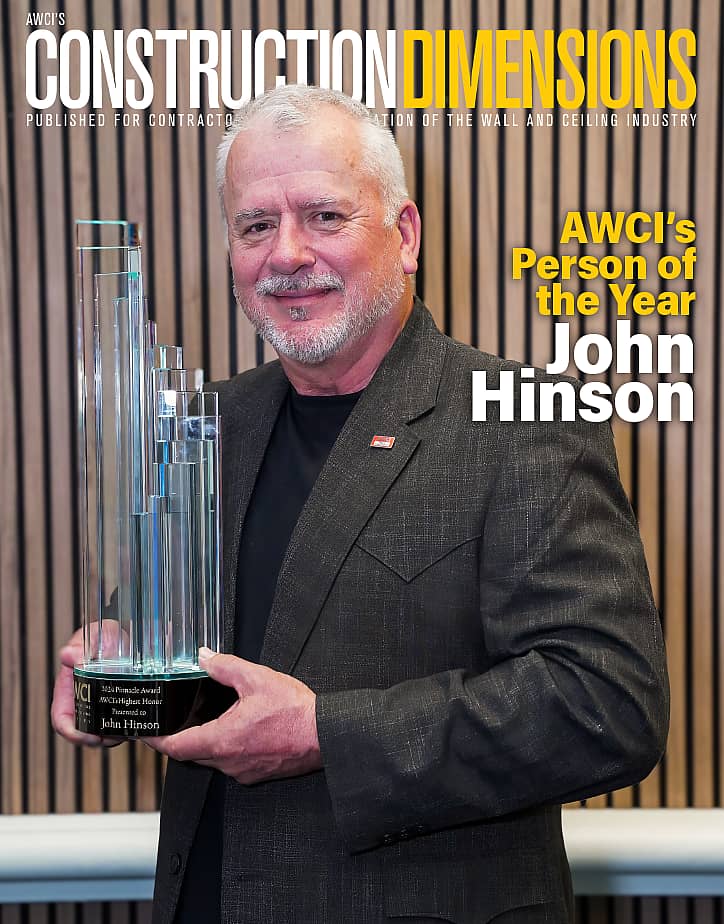Of the many favorable features that our vocation offers, I think that none distinguishes us better from our management level peers than the many different approaches we take to our work. Consider the almost-infinite combination of built-in options in our estimating programs—a scenario that invites each bidmeister to an estimating style that’s as individual as his fingerprints. Clearly this is a welcome situation that presents the exactimator with a new and refreshing set of challenges with each new endeavor, and a remedy against the tedium of repetition.
Certainly the ongoing development of one’s own distinctive style helps make his work more rewarding. During my lengthy career of rubbing shoulders with estimators of every sort, I have observed a whole host of differing practices, from varying sequences of activities to critical foundations of approach—all more or less subjective judgment calls, and all left up to the individual bidmeister. And while I do believe that some ways of doing things are inherently more effective than others, I believe that each individual exactimator will swear that only his way is the best—right?
The visionary and the statistician: Two of the most divergent methods of working, the visual and formulaic, are really complementary elements in a combination approach. The distinction between the approaches lies in the degree to which one of the elements is given dominance over the other.
The visual-leaning estimator more often than not has some (perhaps even extensive) field experience, and his familiarity with the hands-on work enables him to envision not only the physical assemblies, but also the context in terms of conditions that contribute to degree of difficulty.
The estimator with a more formulaic preference is more mathematically grounded, and works from a foundation of historic data, relying heavily on unit pricing and making adjustments for project-specific conditions as they emerge.
Obviously, neither of these approaches would work exclusively, but most quantifiers are very adamant in their preference of one over the other.
The whole enchilada or the sum of its parts: Many commercial drywall estimating programs offer the bidmeister the choice of two tactics when it comes to quantifying labor. Hours (or days) required for installation are usually directly connected to each material component, but the operator has the option of disabling the feature and opting instead for a single line item for total linear (or square) feet of labor time required.
The former option, in breaking out each material element conforms well to the formulaic approach. But the way the components are broken out is not often consistent with the way labor is performed in the field—i.e., one man does not usually put up top track, another bottom track, while another infills with studs.
The latter option allows the estimator to calculate the installation time for an entire assembly, or the basic assembly or anything in between. Consequently, the linear footage of a completely framed wall for one man-day (or crew day) can be estimated. Clearly, this method lends itself more readily to the needs of the estimator who tends to be more visual, as it enables him to relate in the practical terms of work completed on site in an eight-hour day.
To prepare or to plow right in: I heard of two estimators employed in the same stable who approach a new set of bid docs in entirely different ways. The first downloads his drawings, does a cursory scan of the specs, then plows directly into the takeoff like someone blew a whistle and some unseen clock just started ticking. Well, I don’t know about the whistle part, but deadlines are a reality and in this respect, I share this quantifier’s sense of urgency. He insists that he can familiarize himself with the design intent during the process of taking the job off.
His peer in the next office, however, has another approach and avails himself of what he calls the prep phase. His preparatory stage consists of one or two hours of preliminary work on the plans in which he painstakingly renames the pages for easy recognition, sets up links between pages to facilitate multiple views of a particular condition, and makes copious notes regarding unique requirements, unfamiliar components and holes or contradictions in the information that may form the basis for questions to be submitted to the design team via the GC. The claimed advantage to the prep approach lies in the depth of knowledge and the ease of accessibility that the preliminary work brings to the takeoff and the estimate. According to the pre-phase advocate, the hour or so invested up front saves him even more precious time in the long run from duplication of effort and increases his accuracy significantly.
When order is critical: A similarly divergent pair of bidmeisters each may approach the body of his work in predictably dissimilar ways. I once worked alongside such a pair, and their disagreements regarding who had the best method of converting the takeoff to an estimate were legendary. One would take off a wall or ceiling type and immediately build a corresponding condition for it, then return to the takeoff sheet for another assembly, then build a corresponding condition for it, then, well, you get the picture—on and on. His argument for his method rested entirely on short term information retention. He would build the condition while the construction of the wall type was fresh in his mind, thus eliminating the need for bothersome notes and cues.
Conversely, his associate would never fail to complete the takeoff of all wall and ceiling types, flagging each with notes and page/detail cues for later reference, before ever starting to build the conditions of the estimate. His rationale for this approach was that he gained much relevant information during the takeoff process that would better inform his work on the conditions. He claimed that he had “the big picture” when he got to the estimate, rather than flash frames of bits and pieces.
I hope the observations above have gotten readers thinking about their own personal style of estimating. I believe that the freedom that we bidmeisters have in terms of approach to our work is a valuable feature—one that helps keep us from being overwhelmed in other respects.
Vince Bailey is an estimator/project manager in the Phoenix area.





